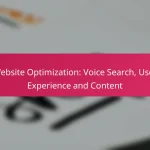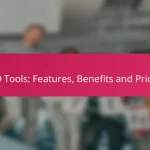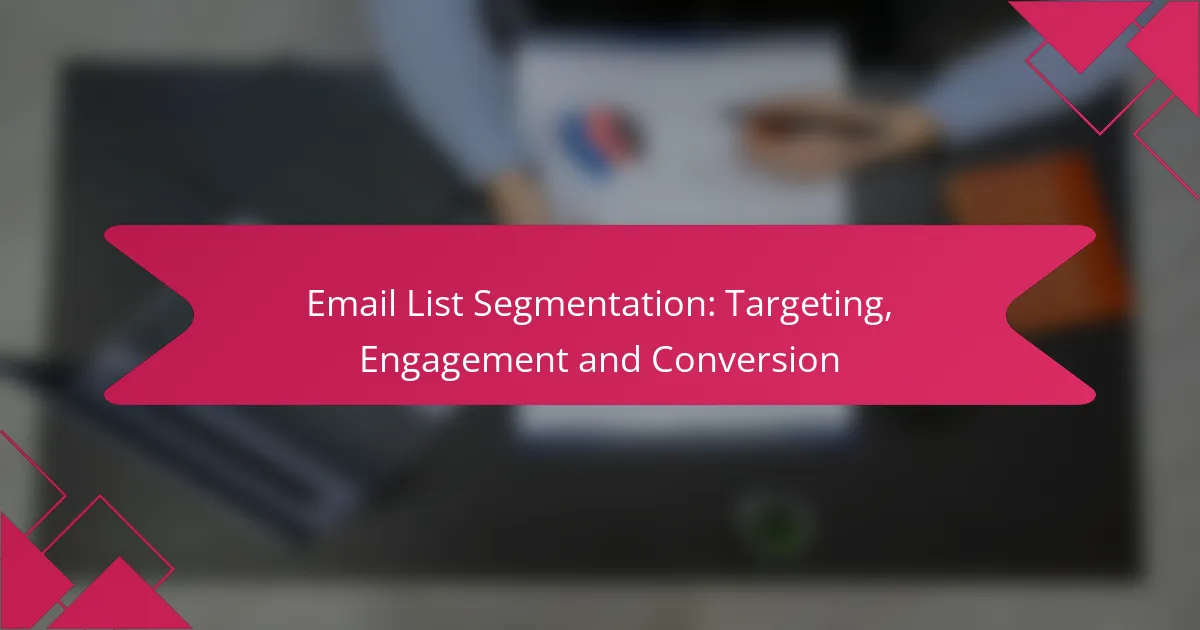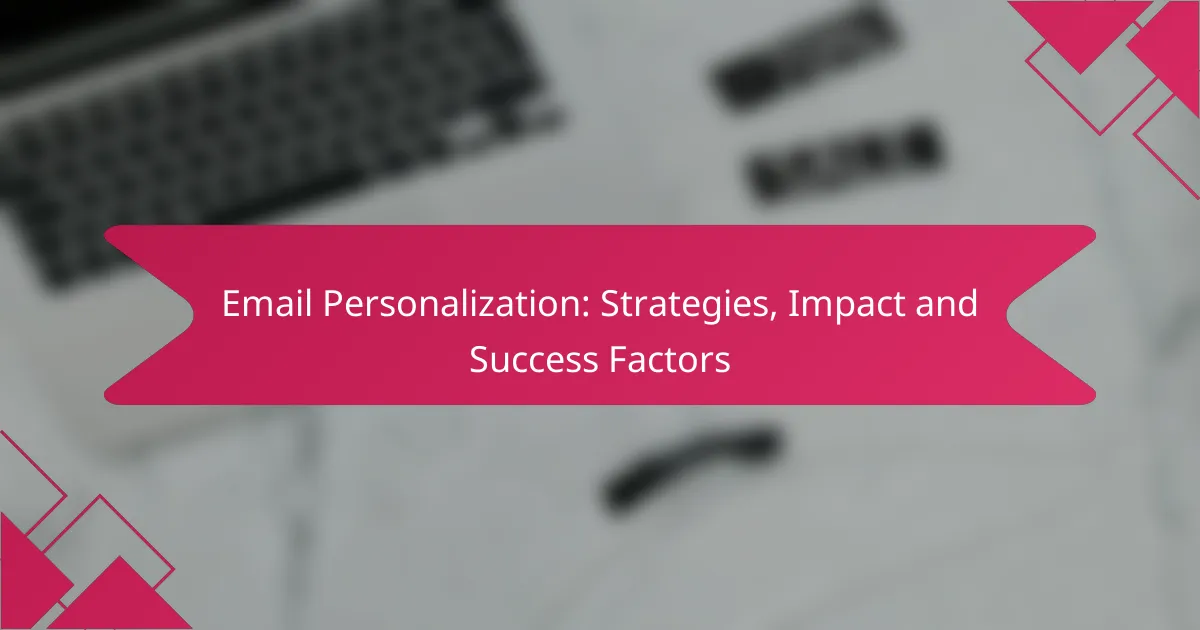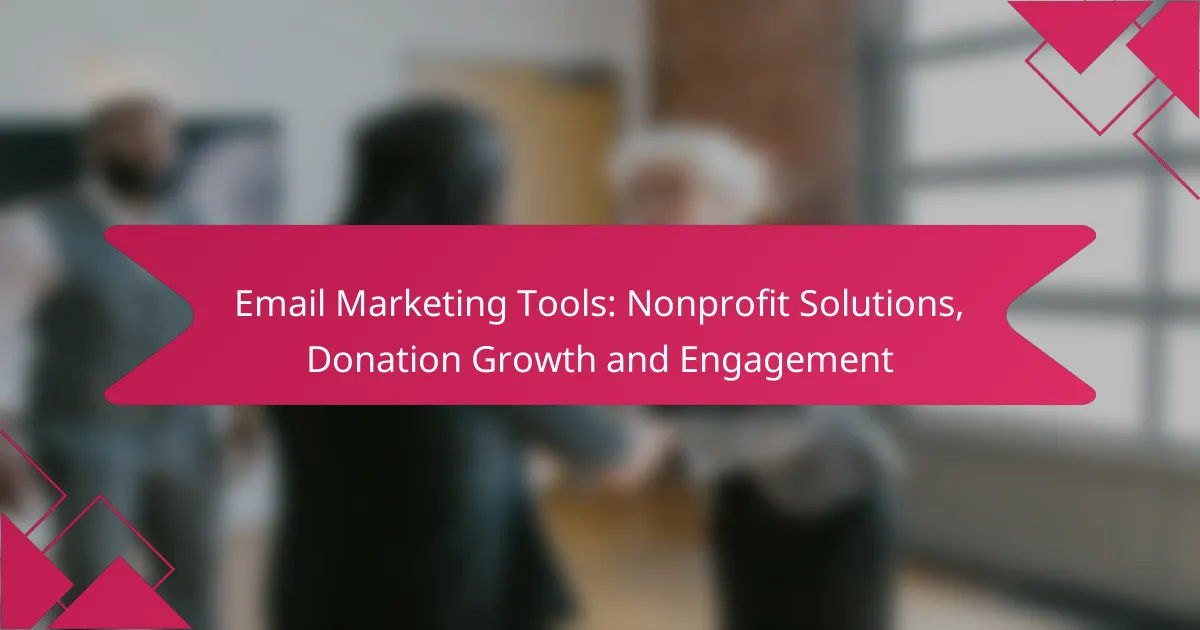Email list segmentation is a crucial strategy for marketers looking to enhance targeting and improve engagement. By dividing audiences into specific groups based on characteristics such as demographics or behavior, businesses can deliver tailored content that resonates with recipients. This targeted approach not only boosts conversion rates but also fosters stronger customer relationships through personalized marketing efforts.
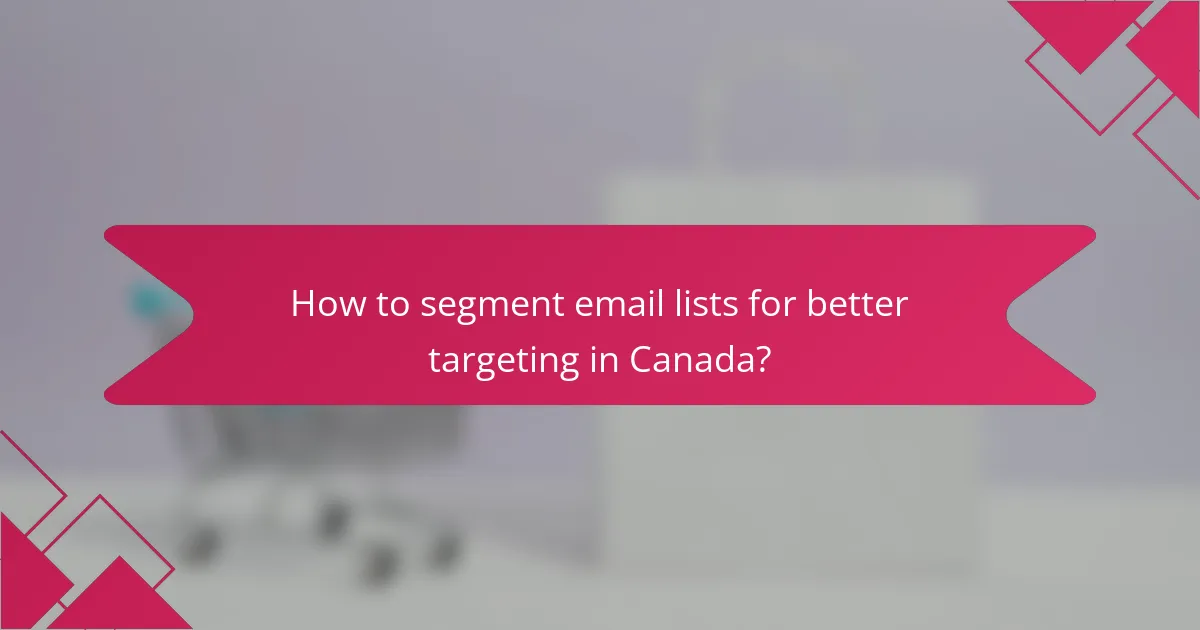
How to segment email lists for better targeting in Canada?
Segmenting email lists in Canada enhances targeting by allowing marketers to tailor their messages based on specific audience characteristics. Effective segmentation can lead to higher engagement and conversion rates by ensuring that the right content reaches the right people at the right time.
Demographic segmentation
Demographic segmentation involves categorizing your email list based on age, gender, income, education, and other personal attributes. For example, targeting younger audiences with trendy products while offering financial services to older demographics can increase relevance.
Consider using surveys or data analytics to gather demographic information. This helps in crafting personalized messages that resonate with each segment, improving open and click-through rates.
Behavioral segmentation
Behavioral segmentation focuses on how subscribers interact with your emails and website. This includes tracking user actions such as purchase history, email opens, and clicks. By analyzing these behaviors, you can create targeted campaigns that address specific interests or needs.
For instance, if a subscriber frequently clicks on promotional emails for outdoor gear, you can send them tailored offers related to that category. This approach can significantly enhance engagement and drive conversions.
Geographic segmentation
Geographic segmentation divides your email list based on location, such as province or city. This is particularly useful in Canada, where regional preferences and cultural differences can influence purchasing decisions.
For example, promoting winter sports gear in provinces with heavy snowfall, like Alberta, while focusing on summer activities in warmer areas can optimize your marketing efforts. Localized content can lead to better engagement and higher conversion rates.
Psychographic segmentation
Psychographic segmentation categorizes subscribers based on their values, interests, and lifestyles. Understanding what motivates your audience can help you create content that resonates on a deeper level.
For example, if a segment values sustainability, you can highlight eco-friendly products in your campaigns. This targeted approach can foster loyalty and increase the likelihood of conversions as customers feel aligned with your brand’s values.
Firmographic segmentation
Firmographic segmentation is relevant for B2B email marketing, focusing on company characteristics such as industry, company size, and revenue. This allows you to tailor your messages to the specific needs of different businesses.
For instance, a software company might target small businesses with budget-friendly solutions while offering enterprise-level services to larger firms. Understanding the firmographics of your audience can enhance your marketing strategy and improve response rates.
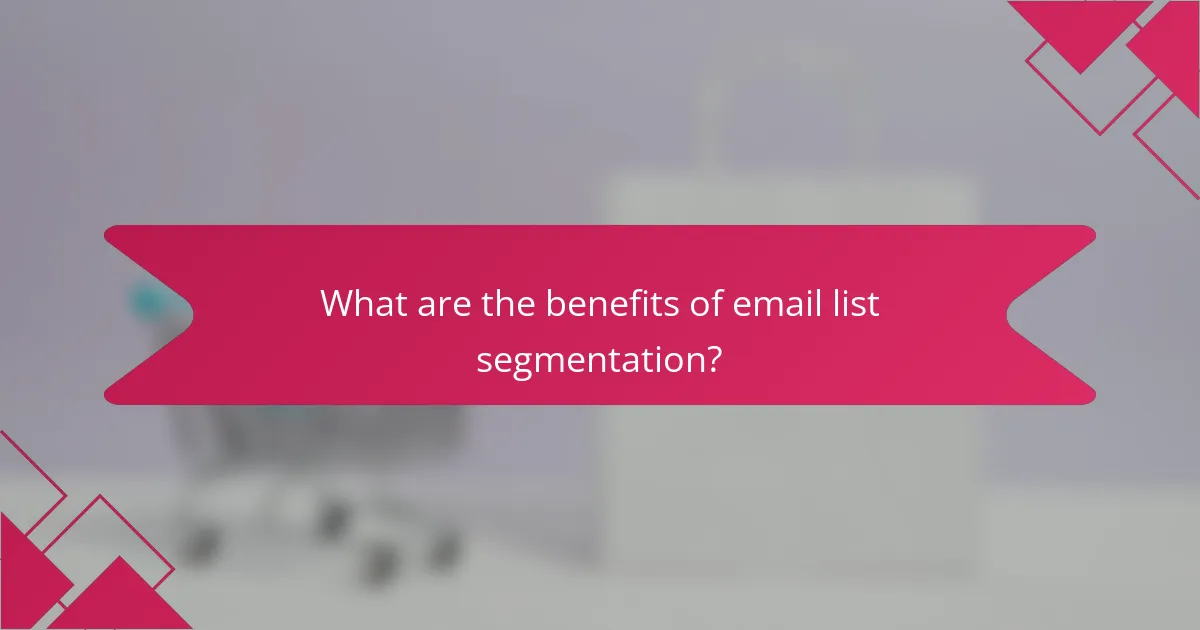
What are the benefits of email list segmentation?
Email list segmentation allows marketers to divide their audience into specific groups based on various criteria, leading to more targeted communication. This practice enhances engagement, boosts conversion rates, improves customer retention, and enables personalized marketing efforts.
Increased engagement rates
Segmenting your email list can significantly increase engagement rates by ensuring that recipients receive content relevant to their interests and needs. For instance, sending tailored promotions to specific demographics or behavioral segments can lead to higher open and click-through rates.
To maximize engagement, consider segmenting based on factors such as purchase history, geographic location, or user behavior. This targeted approach helps create a more meaningful connection with your audience.
Higher conversion rates
Email list segmentation often results in higher conversion rates as it allows for more relevant messaging that resonates with specific groups. When recipients receive offers that align with their preferences, they are more likely to take action, whether it’s making a purchase or signing up for a webinar.
For example, a retail brand could segment its list to send exclusive discounts to loyal customers, leading to increased sales. Implementing A/B testing on segmented campaigns can further refine your approach and enhance conversion outcomes.
Improved customer retention
Segmenting your email list can lead to improved customer retention by fostering a sense of community and loyalty among your audience. By sending personalized content and offers, you can keep customers engaged and encourage repeat purchases.
Consider creating segments for customers who haven’t purchased in a while and sending them re-engagement campaigns. This strategy can help win back inactive users and strengthen long-term relationships.
Enhanced personalization
Email list segmentation enhances personalization by allowing marketers to tailor messages based on individual preferences and behaviors. This level of customization can significantly improve the user experience, making recipients feel valued and understood.
Utilizing data such as past purchases, browsing behavior, and demographic information can help create highly personalized campaigns. For instance, sending birthday discounts or product recommendations based on previous purchases can drive engagement and loyalty.

What tools can help with email list segmentation?
Several tools can enhance email list segmentation by allowing marketers to categorize their subscribers based on various criteria. These tools typically offer features like automation, analytics, and customizable templates to improve targeting and engagement.
Mailchimp
Mailchimp is a user-friendly platform that provides robust segmentation options. Users can create segments based on demographics, behavior, and engagement levels, allowing for tailored messaging that resonates with specific groups.
With its automation features, Mailchimp can send targeted emails based on user actions, such as abandoned carts or recent purchases. This increases the likelihood of conversions by reaching customers at the right moment.
ActiveCampaign
ActiveCampaign excels in advanced segmentation and automation capabilities. It allows users to segment their lists based on detailed criteria, including user interactions and purchase history, which can enhance personalization.
This tool also offers predictive sending, which optimizes email delivery times based on when subscribers are most likely to engage. This feature can significantly improve open and click-through rates.
HubSpot
HubSpot provides a comprehensive marketing platform with powerful segmentation tools. Users can create dynamic lists that automatically update based on subscriber behavior and attributes, ensuring that the right messages reach the right people.
Additionally, HubSpot integrates seamlessly with its CRM, allowing for a unified approach to customer engagement. This integration helps in tracking interactions across multiple channels, enhancing overall marketing effectiveness.
Constant Contact
Constant Contact is known for its ease of use and effective segmentation features. It allows users to segment their email lists based on various criteria, including past purchase behavior and engagement metrics.
The platform also offers list-building tools that help capture new subscribers and categorize them effectively. This ensures that your email campaigns are targeted and relevant, leading to higher engagement rates.
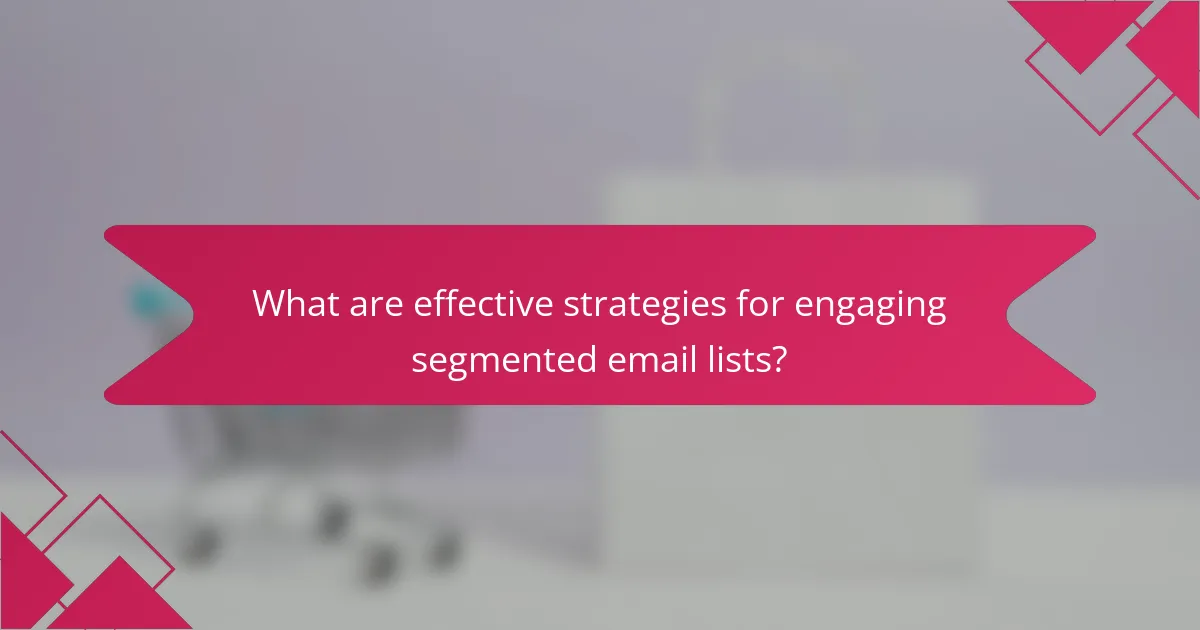
What are effective strategies for engaging segmented email lists?
Engaging segmented email lists requires tailored approaches that resonate with specific audience groups. By utilizing personalized content, targeted offers, and automated workflows, businesses can enhance engagement and drive conversions effectively.
Personalized content
Personalized content involves creating messages that cater to the individual preferences and behaviors of your subscribers. This can include using their names, referencing past purchases, or suggesting products based on browsing history. Such customization can significantly increase open and click-through rates.
To implement personalized content, consider segmenting your list based on demographics, interests, or engagement levels. For example, a clothing retailer might send different emails to men and women, highlighting products that align with their specific styles.
Targeted offers
Targeted offers are promotions designed to meet the unique needs of different segments within your email list. By analyzing customer data, you can create offers that appeal to specific groups, such as discounts on frequently purchased items or exclusive access to new products.
For instance, if a segment consists of loyal customers, offering them a loyalty discount can foster retention. Conversely, new subscribers might respond better to a welcome discount to encourage their first purchase. Tailoring these offers can lead to higher conversion rates.
Automated workflows
Automated workflows streamline the process of sending targeted emails based on user actions or predefined triggers. This can include welcome series for new subscribers, re-engagement campaigns for inactive users, or follow-ups after a purchase.
Setting up these workflows can save time and ensure timely communication. For example, a customer who abandons their shopping cart can receive an automated reminder email within a few hours, increasing the likelihood of completing the purchase. Regularly reviewing and optimizing these workflows can enhance their effectiveness over time.
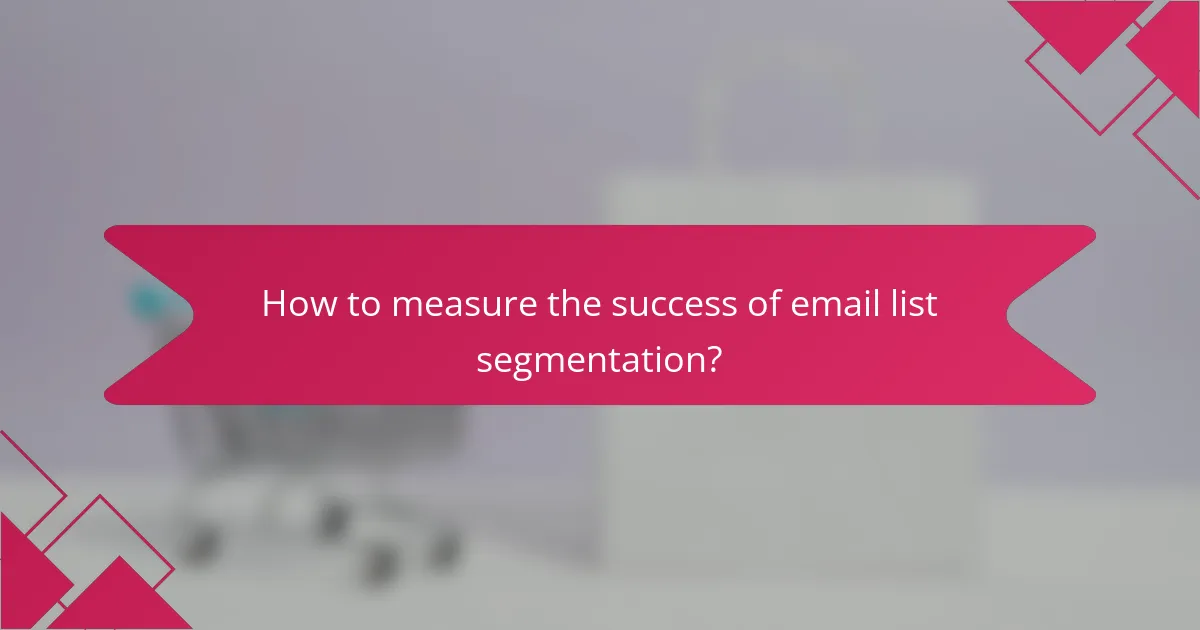
How to measure the success of email list segmentation?
Measuring the success of email list segmentation involves analyzing key performance indicators that reflect how well your segmented lists engage recipients. Focus on metrics such as open rates, click-through rates, and conversion rates to gauge effectiveness and optimize future campaigns.
Open rates
Open rates indicate the percentage of recipients who opened your email, serving as a primary metric for assessing engagement. A strong open rate typically ranges from 15% to 25%, but this can vary by industry and audience. Higher open rates suggest that your subject lines and segmentation strategies are resonating with your target audience.
To improve open rates, consider A/B testing different subject lines and sending times. Personalization can also enhance engagement; for example, including the recipient’s name in the subject line may increase the likelihood of them opening the email.
Be cautious of over-segmentation, which can lead to smaller lists and potentially lower open rates. Ensure that your segments are large enough to generate meaningful engagement while still being targeted enough to provide relevant content.
